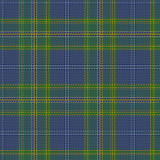What's the meaning of the Aztec Sun Stone »
Aztec Sun Stone
This page is about the meaning, origin and characteristic of the symbol, emblem, seal, sign, logo or flag: Aztec Sun Stone.

Prior to the arrival of Europeans in the late 15th and early 16th centuries, the Aztecs were the mightiest civilization ever seen in the Americas. While much of their culture was destroyed, lost and/or repressed in the succeeding centuries, a few remnants, such as the famous Sun Stone, survived to bear witness to an empire that spanned much of modern-day Mexico and spawned some of the greatest technological feats the Americas had ever seen.
Unearthed in the former Aztec capital of Tenochtitlan (modern-day Mexico City) in the year 1790, the Sun Stone is a massive object that measures twelve feet in diameter and weighs over 40,000 pounds. It is housed at the National Museum of Anthropology in Mexico City and has become one of the most recognizable icons of Aztec and Mesoamerican culture.
Like their famous predecessors, the Mayans, the Aztecs had a sophisticated calendar system that was a trademark of their culture. Contrary to many popular assertions, however, the imagery displayed on the Sun Stone does not represent a calendar, at least not in and of itself. While there are certain elements on the stone that relate to how the Aztecs counted time, there is no overarching theme of yearly cycles playing out in the details.
The mass of imagery on the Sun Stone can be broken down into a series of symbolic layers, each of which portrays a different concept (although there are varying interpretations as to what exactly each one represents). Since these layers can be hard to distinguish from each other without color-coding or some kind of marking system, they will be described in as much detail as possible so that you may follow the pattern logically. We’ll start in the center of the stone and work our way outwards:
Layer #1: in the center of the stone, we see a circular face with what looks like claws emerging from both sides. This is a representation of the sun god Huitzilopochtli. Sun worship was a major feature of Aztec religious practices, and Huitzilopochtli was one of the most important deities in their pantheon. He also presided over war, and the Aztecs were a very warlike people who maintained a large and powerful army. Since the two concepts of sun and war were so central to Aztec culture, it makes sense that they would take center stage in such a dramatic piece of artwork.
Layer #2: surrounding the face of Huitzilopochtli, there are a series of four small squares, each of which contains an image. This is an allusion to one way the Aztecs viewed the count of time. According to tradition, the Aztecs believed that the time they were living in was actually the fifth era to exist since the world was created. Before their time, the gods had made multiple attempts at creation but not been fully successful, and each of those attempts had been destroyed in a specific way; by jaguars, by rain, by wind and by water. Each square represents one of these previous attempts at creation and marks how those unsuccessful were wiped clean.
Layer #3: this particular layer is a bit harder to spot. If you look at the two squares above the face of Huitzilopochtli, you can see two small figures wedged in between the squares themselves and the protruding triangle. Looking below the face, there are two more small figures in between the bottom two squares and the surrounding edge of the circle. The figures represent the four cardinal directions of north, south, east and west.
Layer #4: surrounding the first three layers is a thin ring in which are contained twenty small images, and each image in that ring is separated from its neighbors by two upright bars. This is another allusion that relates to how the Aztecs viewed the count of time. The Aztec calendar actually consisted of two separate cycles; a solar year of 365 days that was used for agricultural purposes, while a lunar year of 260 days was for religious use. In the latter, 20 days were assigned to each of the 18 months of the lunar year, and the small images in layer #4 each represent a god that was associated with one of those days.
Layer #5: surrounding layer #4, you can see a series of four large, triangular arrows, each one interspersed with four smaller triangles and lots of ornate detailing. While the eight triangles are thought to represent the rays of the sun, it is not entirely clear what all of the tiny details and shapes stand for. The American Museum of Natural History, which houses a full-sized replica of the Sun Stone, believes that these details may represent “preciousness”, but this notion in itself could refer to any of an infinite number of possibilities.
Layer #6: at the bottom of the image, we can see what looks like two faces staring at each other in profile. The outermost circle of the Sun Stone, patterned mostly with ornately designed squares, is connected to these faces and seems to form long serpentine bodies. Wrapping around nearly the entire circumference of the Sun Stone, they come to triangular points just shy of the design’s apex. The individual halves of this symbolic layer each represent a god, and are indicative of a key notion in the Aztec worldview; dualism. The Aztecs believed that everything in the universe existed as a balance of opposing forces, and that maintaining this balance was what kept the world in harmony. Although none of the gods would be able to prevail in the struggle between these forces, if humans failed to honor the gods properly, the spiritual balance would shift, and conflict and disaster could very well result.
Layer #7: the final symbolic component of the Sun Stone is not exactly a layer, at least not in the way that the pervious ones have been described. At the very top of the stone, we see a small, square box carved with a plant-like design and a number of tiny circles. This image refers to a date in the Aztec lunar calendar. Known as “13 reed”, it is the date on which, according to tradition, the sun was created, again emphasizing the key importance of sun worship within Aztec religious practices.
For a more succinct, and slightly varying, interpretation of what the imagery on the Sun Stone means, visit this page on the website of Mexico City’s National Museum of Anthropology (click the “i” tab on the upper right and browse the “Google Art Project” link on the lower right to get the specifics):
http://www.mna.inah.gob.mx/coleccion/pieza-243/ficha-basica.html
- 2,560 Views
Graphical characteristics:
Asymmetric, Closed shape, Monochrome, Contains both straight and curved lines, Has no crossing lines.
Category: Miscellaneous.
More symbols in Miscellaneous:
Symbols without any special category attribution but that are widely used worldwide. read more »
Citation
Use the citation below to add this symbol to your bibliography:
Style:MLAChicagoAPA
"Aztec Sun Stone." Symbols.com. STANDS4 LLC, 2025. Web. 24 Jan. 2025. <https://www.symbols.com/symbol/aztec-sun-stone>.












Have a discussion about Aztec Sun Stone with the community:
Report Comment
We're doing our best to make sure our content is useful, accurate and safe.
If by any chance you spot an inappropriate comment while navigating through our website please use this form to let us know, and we'll take care of it shortly.
Attachment
You need to be logged in to favorite.
Log In